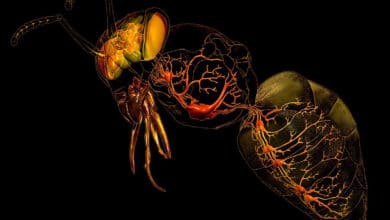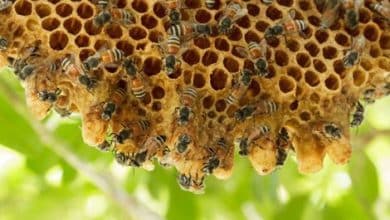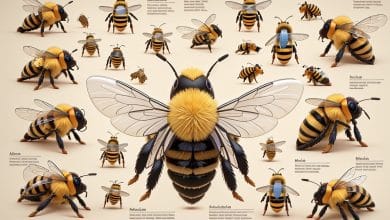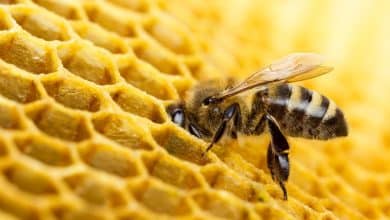caucasian honey bee

The Caucasian Honey Bee, scientifically known as Apis mellifera caucasia, is a subspecies of the Western Honey Bee. Native to the Central Caucasus region, these honey bees have gained popularity among beekeepers worldwide due to their exceptional honey production and gentle nature.
Caucasian honey bees were first introduced to the United States in the 19th century, attracting the interest of beekeepers due to their desirable traits. They were brought from their ancestral home in Georgia, located in the Central Caucasus. This subspecies was particularly favored by beekeeper Frank Benton and Georgian entomologist Ilarion Kavtaradze, who visited Georgia in 1905 and supported the importation of these honeybees to the United States.
The Caucasian Honey Bee is classified under the Class Insecta, Order Hymenoptera, Family Apidae, and Genus Apis. Known for their docile nature, these bees have been widely used in beekeeping due to their calm behavior, making them easier to handle and work with.
One of the main advantages of keeping Caucasian honey bees is their ability to produce large quantities of honey and propolis. Honeybees of this subspecies are known for their high honey production and the quality of their products. Moreover, they have shown the ability to adapt to different climates and environments, further enhancing their value to beekeepers.
However, there are also challenges that come with keeping Caucasian honey bees, including their occasional aggressiveness and susceptibility to pests and diseases. It is important for beekeepers to manage and support these colonies effectively to mitigate these challenges.
In conclusion, the Caucasian Honey Bee is an important subspecies in the field of beekeeping. With their advantageous traits and unique characteristics, they continue to be sought after by beekeepers worldwide for their high honey production and docile nature. Conservation efforts and best practices in management are vital to maintaining their genetic diversity and ensuring the continued success of Caucasian honey bee colonies.
Origin and characteristics of the Caucasian Honey Bee
The Caucasian Honey Bee, also known as Apis mellifera caucasia, is a subspecies of the Western Honey Bee that originated in the high valleys of the Central Caucasus. Although their central homeland is in Georgia, these bees can also be found in eastern Turkey, Armenia, and Azerbaijan.
The Caucasian Honey Bee is known for its unique characteristics that set it apart from other subspecies. In terms of appearance, they have a dark brown or black body covered in dense hair, with a slightly longer tongue that allows them to access nectar from deep flowers. Their strong wings enable them to fly in cooler temperatures, making them well-suited for the mountainous regions of their native habitat.
One of the most notable characteristics of the Caucasian Honey Bee is its calm and docile nature. This makes them easier to handle and work with for beekeepers, reducing the need for protective gear during hive inspections.
In addition to their friendly temperament, Caucasian Honey Bees are also highly productive. They have a remarkable capacity for honey and propolis production, allowing beekeepers to harvest large quantities of high-quality honey. Furthermore, they have shown adaptability to various climates and environments, making them a viable choice for beekeepers in different regions.
However, it is important to note that Caucasian Honey Bees can display occasional aggressiveness, especially when their hive is under threat. Additionally, they are vulnerable to certain pests and diseases, requiring proper management and care from beekeepers.
In conclusion, the Caucasian Honey Bee is a subspecies with origins in the Central Caucasus and distinct characteristics that make it appealing to beekeepers. With their gentle nature, high productivity, and adaptability, they have become sought after in the field of beekeeping. However, beekeepers must also address challenges such as occasional aggressiveness and susceptibility to pests and diseases to maintain healthy colonies.
Importance of the Caucasian Honey Bee for beekeeping
The Caucasian Honey Bee holds significant importance in the field of beekeeping due to its exceptional characteristics and benefits. Here are some reasons why the Caucasian Honey Bee is highly valued by beekeepers:
- High honey production: The Caucasian Honey Bee is renowned for its remarkable capacity to produce large quantities of honey. Beekeepers can harvest high-quality honey from these bees, making them a valuable asset in the honey production industry. Their productivity ensures a stable and substantial honey supply for both commercial and hobbyist beekeepers.
- Gentle nature: One of the most significant advantages of the Caucasian Honey Bee is its calm and docile temperament. They are generally less aggressive compared to other bee subspecies, making them easier to handle for beekeepers. This means that beekeepers can work with these bees with minimal protective gear, reducing the risk of stings and making hive inspections and beekeeping tasks more manageable.
- Adaptability to different climates: The Caucasian Honey Bee has proven to be adaptable to various climates and environments. They can thrive not only in their native mountainous regions but also in different geographical locations. This adaptability makes them suitable for beekeepers in different parts of the world, allowing them to maintain healthy and productive colonies in diverse settings.
- Efficient pollinators: Apart from honey production, the Caucasian Honey Bee is an excellent pollinator. They play a crucial role in the pollination of plants, contributing to the reproduction and biodiversity of various ecosystems. Beekeepers benefit from the bees’ pollination services, as it enhances the productivity of their agricultural and horticultural crops.
In summary, the Caucasian Honey Bee is highly valuable for beekeeping due to its high honey production, gentle nature, adaptability, and efficient pollination abilities. These bees offer numerous benefits to beekeepers, making them a sought-after subspecies in the beekeeping industry. Beekeepers need to maximize the advantages offered by the Caucasian Honey Bee while addressing potential challenges for successful and sustainable beekeeping practices.
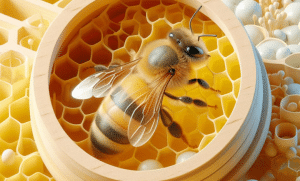
Physical Features and Behavior of the Caucasian Honey Bee
The Caucasian Honey Bee is known for its distinct physical features and unique behavior. It shares many similarities with the Carniolan Bee in terms of its exterior appearance and calm demeanor. However, the Caucasian Honey Bee has a slight advantage over other breeds with regards to the length of its tongue, making it the bee with the longest tongue.
In terms of physical appearance, the Caucasian Honey Bee has a medium-sized body covered in dense, light gray to dark brown hair. It also has distinctive black stripes on its abdomen. The bees have a robust build and are well-adapted to withstand harsh environmental conditions.
When it comes to behavior, the Caucasian Honey Bee is highly regarded for its calm and docile temperament. Unlike other bee species, they are generally less aggressive, making them easier to handle for beekeepers. This gentle nature allows beekeepers to work with the bees with minimal protective gear, reducing the risk of stings.
Additionally, the Caucasian Honey Bee is known for its disciplined foraging habits. They have excellent navigational skills and are efficient pollinators. Their ability to locate and collect nectar and pollen from a wide variety of plants contributes to the success and productivity of beekeeping operations.
Overall, the physical features and behavior of the Caucasian Honey Bee make it a highly desirable and valuable subspecies for beekeepers. Its calm nature, combined with its efficient pollination abilities, makes it ideal for honey production and maintaining healthy colonies. Beekeepers can benefit from the advantageous characteristics of the Caucasian Honey Bee for successful and sustainable beekeeping practices.
Appearance and distinguishing features
The Caucasian Honey Bee, also known as Apis mellifera caucasica, is characterized by its distinct physical appearance and distinguishing features. These features contribute to its unique charm and make it easily recognizable among other bee species.
In terms of size and shape, the Caucasian Honey Bee is similar to other honey bee species, with a medium-sized body and a length ranging from 11 to 17 millimeters. However, it stands out with its dark coloration, often appearing as a lead-gray shade. Some bees may also have brown spots, adding to their distinctive appearance.
One of the most remarkable features of the Caucasian Honey Bee is its long tongue, or proboscis, which can reach up to 7 millimeters in length. This gives them an advantage when it comes to foraging for nectar in flowers with long corollas, allowing them to access nectar that may be inaccessible to other bee species. Their long tongues enable them to efficiently collect nectar from a wide range of flowers, contributing to their role as effective pollinators.
Furthermore, the Caucasian Honey Bee has a dense covering of light gray to dark brown hair on its body. This dense hair not only helps protect them from harsh environmental conditions but also serves as a source of insulation, keeping them warm during colder months and cool during hot periods.
Overall, the unique physical characteristics and distinguishing features of the Caucasian Honey Bee make it easily distinguishable from other bee species. Its dark coloration, long tongue, and dense hair set it apart and contribute to its role as an efficient pollinator and valuable member of the beekeeping community.
Behavior and foraging habits
The behavior and foraging habits of the Caucasian Honey Bee play a crucial role in their role as pollinators and honey producers. These bees are known for their diligent and efficient foraging abilities, contributing to their reputation as valuable members of the beekeeping community.
Caucasian Honey Bees exhibit a strong work ethic and are highly productive in collecting nectar and pollen. They are known to be active foragers, frequently visiting a wide variety of flowers to gather food resources. These bees have a strong preference for native blooming plants, as they have coevolved to efficiently exploit the floral resources of their native habitats.
When foraging, Caucasian Honey Bees use their long proboscis to extract nectar from flowers with long corollas, allowing them to access nectar that may be inaccessible to other bee species. They also collect and transport pollen, playing a vital role in plant reproduction through pollination.
These bees exhibit a complex communication system, including waggle dances, to communicate the location of food sources to other hive members. This allows for efficient resource allocation and ensures that honey bee colonies optimize their foraging efforts.
In terms of behavior, Caucasian Honey Bees are generally docile and non-aggressive. However, they can become defensive and aggressive when their hive is threatened or during times of resource scarcity. It is important for beekeepers to handle the hives with care and maintain a calm and gentle approach to minimize disturbances and prevent defensive behaviors.
Overall, the behavior and foraging habits of the Caucasian Honey Bee contribute to their efficiency as pollinators and honey producers. Their diligent foraging and communication abilities, combined with their adaptability to different environments, make them valuable assets for both commercial beekeeping and ecological conservation.
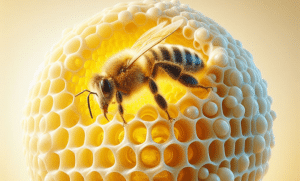
Benefits and Advantages of Keeping Caucasian Honey Bees
The Caucasian Honey Bee offers numerous benefits and advantages for beekeepers, making them a popular choice in both commercial and backyard apiaries. Here are some key advantages of keeping Caucasian Honey Bees:
- Longest proboscis: Caucasian Honey Bees have the longest proboscis among honey bee species, reaching up to 7.3mm in length. This enables them to access nectar in flowers with long corollas that may be inaccessible to other bee species.
- Gentle temperament: Caucasian Honey Bees are known for their gentle nature, making them easy to handle and work with. This is particularly beneficial for beekeepers, as it reduces the risk of stings and allows for stress-free hive management.
- Agile and persistent foragers: These bees are highly agile and persistent in their foraging activities. They visit a wide variety of flowers to collect nectar and pollen, contributing to their efficiency as pollinators. Their diligent foraging habits also make them highly productive honey producers.
- Winter hardiness: Caucasian Honey Bees are well-adapted to withstand harsh winter conditions. They have a strong ability to survive and thrive during periods of low temperatures and limited food resources, ensuring the survival of the colony and maintaining honey production even in unfavorable climates.
- Resilience in poor nectar supply: The Caucasian Honey Bee has the remarkable ability to produce high amounts of honey even in seasons of poor nectar supply. This makes them particularly valuable for beekeepers operating in areas with unpredictable or limited floral resources.
- Adaptability to diverse environments: Caucasian Honey Bees have the ability to adapt and thrive in different climates and environments. Whether it is hot and dry regions or cooler temperate zones, these bees can adjust and continue their foraging and productivity.
In conclusion, the Caucasian Honey Bee offers a range of benefits and advantages for beekeepers. Its combination of a long proboscis, gentle temperament, persistence, winter hardiness, and adaptability makes this honey bee species an excellent choice for both honey production and pollination services.
High honey production and quality
The Caucasian Honey Bee is highly regarded for its exceptional honey production and quality. Beekeepers who choose to keep Caucasian Honey Bees can expect impressive yields of honey from their colonies.
One of the reasons for their high honey production is their diligent foraging habits. Caucasian Honey Bees are known for being agile and persistent when it comes to collecting nectar and pollen. They visit a wide variety of flowers, ensuring that they make the most of available floral resources. This results in a significant amount of nectar being collected and converted into honey.
Furthermore, the long proboscis of the Caucasian Honey Bee allows them to access nectar in flowers with long corollas that may be inaccessible to other bee species. This means they can gather nectar from a wider range of flowers, increasing their honey production potential.
In addition to high production, the honey produced by Caucasian Honey Bees is of excellent quality. The bees collect nectar from diverse sources, resulting in a unique blend of flavors in the honey. The flavor profile of Caucasian Honey Bee honey is often described as delicate, with hints of floral and fruity notes. It is highly sought after by honey enthusiasts for its distinct taste and aroma.
Beekeepers also appreciate the ease of extracting honey from Caucasian Honey Bee colonies due to their gentle nature. The bees are less likely to become aggressive during honey harvesting, reducing the risk of stings and making the process less stressful.
Overall, the high honey production and quality of the Caucasian Honey Bee make it a valuable choice for beekeepers looking to maximize their honey yields and offer a premium product to consumers.
The ability to adapt to different climates and environments
The Caucasian Honey Bee has gained recognition for its remarkable ability to adapt to a wide range of climates and environments. This adaptability makes it a sought-after choice for beekeepers operating in diverse regions.
One of the key reasons for the Caucasian Honey Bee’s adaptability is its genetic predisposition. Over centuries, these bees have evolved in the mountainous regions of the Caucasus, where they have had to cope with contrasting weather conditions, including hot summers and harsh winters. This genetic diversity enables them to withstand extreme temperatures, varying humidity levels, and fluctuations in food availability.
Additionally, the Caucasian Honey Bee’s ability to adjust its foraging habits and behavior plays a vital role in its adaptability. These bees are known to be highly adaptable in their search for nectar and pollen sources. They can efficiently utilize a wide variety of plants and flowers as food resources, making them resilient in environments with limited floral diversity.
Furthermore, the reinforced immune system of the Caucasian Honey Bee contributes to their ability to thrive in different climates and environments. This robust immune system helps them resist diseases and parasites that are prevalent in specific regions.
By being versatile and resilient, the Caucasian Honey Bee offers beekeepers the advantage of successfully maintaining colonies in various geographical areas. Their capacity to adapt to different climates and environments not only ensures the survival of the colonies but also allows for consistent honey production in areas where other bee species might struggle.
In conclusion, the adaptability of the Caucasian Honey Bee makes it an advantageous choice for beekeepers. Its genetic predisposition, foraging flexibility, and robust immune system enable it to thrive and produce honey in diverse climates and environments. Beekeepers can rely on these bees to endure unfavorable conditions and deliver consistent honey yields.
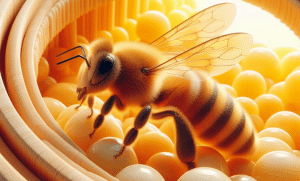
Potential Challenges in Keeping Caucasian Honey Bees
Keeping Caucasian Honey Bees can present some potential challenges for beekeepers. It’s important to be aware of these challenges and take appropriate measures to address them in order to maintain healthy and productive colonies.
- Aggressiveness and defensive behavior: Caucasian Honey Bees have a reputation for being more defensive compared to other honey bee subspecies. They can exhibit aggressive behavior when their colonies are threatened, which can pose a challenge for beekeepers during hive inspections or honey harvesting. Beekeepers should take necessary precautions such as wearing protective clothing and using smoke to calm the bees before working with them.
- Susceptibility to pests and diseases: Like other honey bees, Caucasians are vulnerable to various pests and diseases, including Varroa mites, foulbrood, and small hive beetles. It is important for beekeepers to regularly monitor their colonies and take appropriate measures to prevent and manage these issues. This may include using integrated pest management strategies, such as screened bottom boards, regular hive inspections, and employing treatments when necessary.
Additionally, Caucasian Honey Bees may have limited tolerance to certain environmental and climatic conditions. They may struggle in excessively hot or cold environments, or in areas with limited floral resources. Beekeepers should consider these factors when keeping Caucasian Honey Bees and provide supplementary feeding and suitable hive insulation when needed.
Despite these potential challenges, with proper management and care, Caucasian Honey Bees can thrive and offer their unique advantages to beekeepers. By understanding and addressing these challenges, beekeepers can ensure the health and productivity of their Caucasian Honey Bee colonies.
Aggressiveness and defensive behavior
The Caucasian Honey Bee is known for its aggressiveness and defensive behavior, which can pose a challenge for beekeepers. When their colonies are threatened or disturbed, these bees can exhibit aggressive responses to protect their hive and colony members. This aggressive behavior can include stinging or swarming towards perceived threats.
In order to manage the aggressiveness of Caucasian Honey Bees, beekeepers need to take necessary precautions. It is essential to wear protective clothing, including a veil, gloves, and a bee suit, to minimize the risk of stings. Beekeepers should also use smoke, a common tool in beekeeping, to calm the bees before working with them. The smoke disrupts communication among the bees, reducing their defensive response.
Regular hive inspections should be conducted with caution, attending to the needs of the colony while being mindful of the bees’ defensive behavior. It is important not to disrupt the hive excessively, as this can trigger the bees’ aggressive response.
Beekeepers should also consider the genetic characteristics of their honey bee colonies. Selecting and breeding Caucasian Honey Bee lines that exhibit lower levels of aggression can help in managing their defensive behavior. There are bred lines available that have been bred for docility and are less likely to exhibit aggressive behavior.
Overall, by understanding the inherent aggressiveness of Caucasian Honey Bees and taking appropriate measures to manage their defensive behavior, beekeepers can successfully work with these bees and maintain healthy and productive colonies.
Susceptibility to pests and diseases
The Caucasian Honey Bee is known to be susceptible to various pests and diseases, which can pose challenges for beekeepers. One of the major threats to these bees is the Varroa mite (Varroa destructor). This parasitic mite attaches itself to adult bees and their brood, feeding on their hemolymph (bee blood) and transmitting viruses. The Varroa mite can weaken and ultimately kill honey bee colonies if left untreated.
In addition to Varroa mites, the Caucasian Honey Bee is also susceptible to other pests such as wax moths, small hive beetles, and tracheal mites. These pests can cause significant damage to the hive, compromising the health and productivity of the colony.
Furthermore, the Caucasian Honey Bee is vulnerable to various diseases, including American foulbrood, European foulbrood, chalkbrood, and Nosema. These diseases can spread rapidly within the colony, leading to the death of the bees and the collapse of the hive.
To mitigate the impact of pests and diseases on Caucasian Honey Bee colonies, beekeepers need to implement effective management strategies. This includes regular monitoring for signs of infestation or disease, proper hygiene practices, and timely treatment when necessary. It is also important to implement integrated pest management (IPM) techniques, which involve a combination of cultural, mechanical, and biological control methods to maintain a healthy bee population.
Overall, beekeepers must be vigilant in protecting Caucasian Honey Bee colonies from the various pests and diseases they are susceptible to. By implementing proper management practices and monitoring the health of the colonies, beekeepers can help ensure the survival and productivity of these important honey bee populations.
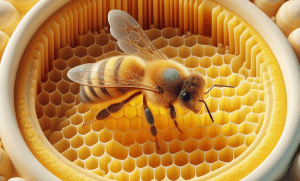
Conservation and Management of Caucasian Honey Bees
Conservation and Management of Caucasian Honey Bees:
Conservation efforts play a crucial role in preserving the genetic diversity and resilience of the Caucasian Honey Bee population. Due to their unique characteristics and adaptations, it is important to focus on maintaining and protecting these bees.
One key aspect of conservation is promoting genetic diversity. The Caucasian Honey Bee is known for its adaptability to different climates and environments, making it a valuable resource for beekeeping. However, widespread commercial breeding and the introduction of other honey bee subspecies have resulted in the dilution of the Caucasian Honey Bee gene pool. To counteract this, beekeepers and conservationists should prioritize the preservation of pure Caucasian Honey Bee colonies and work towards maintaining their unique traits.
The management of Caucasian Honey Bees also plays a vital role in their conservation. Beekeepers should implement best practices to ensure the health and well-being of the colonies. This includes regular monitoring for signs of pests and diseases, practicing good hygiene, and providing appropriate nutrition. Timely treatment of any infestations or diseases is essential to prevent their spread within the colony.
Additionally, promoting habitat conservation is crucial for the survival of the Caucasian Honey Bee. Beekeepers can create and maintain bee-friendly habitats by planting a diverse range of flowering plants and avoiding the use of pesticides that are harmful to bees. Protecting natural habitats and supporting initiatives that aim to restore pollinator-friendly landscapes will also contribute to the conservation of this valuable bee species.
In conclusion, the conservation and management of Caucasian Honey Bees are essential for their long-term survival and the sustainability of beekeeping. By prioritizing genetic diversity, implementing effective management practices, and promoting habitat conservation, we can ensure the continued success and resilience of these important pollinators.
Conservation efforts and the importance of maintaining genetic diversity
Conservation efforts play a crucial role in preserving the genetic diversity and resilience of the Caucasian Honey Bee population. Due to their unique characteristics and adaptations, it is important to focus on maintaining and protecting these bees.
One key aspect of conservation is promoting genetic diversity. The Caucasian Honey Bee is known for its adaptability to different climates and environments, making it a valuable resource for beekeeping. However, widespread commercial breeding and the introduction of other honey bee subspecies have resulted in the dilution of the Caucasian Honey Bee gene pool. To counteract this, beekeepers and conservationists should prioritize the preservation of pure Caucasian Honey Bee colonies and work towards maintaining their unique traits.
Maintaining genetic diversity is essential for the long-term viability and adaptation of honey bee populations. It allows for a wider range of genetic traits, which can provide advantages in terms of disease resistance, tolerance to environmental stresses, and overall robustness. By conserving the genetic diversity of the Caucasian Honey Bee, we ensure the future success and sustainability of beekeeping.
In order to preserve the genetic integrity of the Caucasian Honey Bee, efforts should focus on identifying and conserving purebred colonies. This can be achieved through selective breeding programs and collaboration between beekeepers, researchers, and conservation organizations. Conservation efforts should aim to protect the natural habitats of the Caucasian Honey Bee, as well as establish protected areas or sanctuaries where purebred colonies can thrive.
In addition to genetic conservation, promoting responsible beekeeping practices is crucial for the overall health and well-being of the Caucasian Honey Bee population. Beekeepers should implement best practices to prevent the introduction and spread of diseases and pests, maintain proper nutrition, and avoid the use of harmful chemicals. Regular monitoring and management of colonies will help ensure their long-term survival.
Overall, the conservation and management of Caucasian Honey Bees are essential for their long-term survival and the sustainability of beekeeping. By prioritizing genetic diversity and implementing effective management practices, we can ensure the continued success and resilience of these important pollinators.
Best practices for managing and supporting Caucasian Honey Bee colonies
When managing and supporting Caucasian Honey Bee colonies, it is essential to implement best practices that promote their health and well-being. Here are two key practices to consider:
- Regular monitoring and inspection: Regular monitoring and inspection of the colonies are crucial for detecting any potential issues or diseases early on. Beekeepers should regularly check the brood pattern, bee population, and honey production to ensure the overall health and productivity of the colony. By identifying and addressing issues promptly, beekeepers can prevent the spread of diseases and maximize colony performance.
- Providing a suitable habitat: Creating a suitable habitat is vital for the success of Caucasian Honey Bee colonies. Beekeepers should ensure that the colonies have access to a diverse range of plants and flowers that provide adequate nutrition throughout the seasons. Additionally, providing a clean and well-ventilated hive with appropriate weatherproofing will help protect the bees from harsh environmental conditions.
In addition to these best practices, it is important to handle Caucasian Honey Bee colonies with care and respect. Beekeepers should take the necessary precautions to avoid causing stress or harm to the bees. This includes using gentle handling techniques, avoiding unnecessary hive disturbances, and providing proper nutrition and water sources.
Overall, by implementing these best practices in colony management, beekeepers can support the health and productivity of Caucasian Honey Bee colonies. This will contribute to the long-term sustainability and conservation of this valuable bee population.
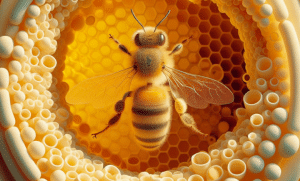
Conclusion Caucasian honey bee
In conclusion, the Caucasian honey bee, also known as Apis mellifera caucasica, is a valuable subspecies of the western honey bee. Its gentle nature, high honey production, and ability to adapt to different climates and environments make it an excellent choice for beekeeping. However, there are also challenges associated with keeping Caucasian honey bees, such as their aggressiveness and susceptibility to pests and diseases.
Overall, the Caucasian honey bee offers numerous benefits to beekeepers. They are known for their high honey production and the quality of their honey. Additionally, their ability to adapt to various climates and environments allows them to thrive in different regions.
To successfully manage and support Caucasian honey bee colonies, beekeepers should implement best practices. Regular monitoring and inspection are crucial for detecting any potential issues or diseases early on. Providing a suitable habitat with access to a diverse range of plants and flowers ensures adequate nutrition for the bees. It is also important for beekeepers to handle the bees with care and respect, avoiding unnecessary stress or harm.
Conservation efforts are essential to maintaining the genetic diversity of Caucasian honey bees and ensuring their long-term survival. By protecting and preserving this subspecies, beekeepers can contribute to the overall health of bee populations and the sustainability of their beekeeping practices.
In conclusion, the Caucasian honey bee offers numerous advantages and benefits for beekeepers, including high honey production, adaptability, and intrinsic value to conservation efforts. With proper management and support, the Caucasian honey bee has the potential to play a significant role in the future of beekeeping.
Summary of the characteristics and benefits of the Caucasian Honey Bee
The Caucasian honey bee, also known as Apis mellifera caucasica, offers a range of characteristics and benefits that make it a valuable subspecies for beekeeping. This particular bee strain has been highly regarded for its exceptional qualities, making it a popular choice among beekeepers.
The Caucasian honey bee stands out for its gentle nature, making it less prone to aggression compared to other bee strains. This characteristic makes it easier to handle and work with, reducing the risk of stings and beekeeper injuries. Additionally, the Caucasian honey bee has a strong ability to adapt to different climates and environments, allowing it to thrive in various regions.
One of the significant advantages of the Caucasian honey bee is its high honey production. These bees are known for their ability to produce large quantities of high-quality honey, making them a preferred choice for commercial beekeepers. The honey produced by Caucasian honey bees has a distinct flavor profile and is highly valued by consumers.
In terms of disease resistance, the Caucasian honey bee is known to be less susceptible to certain pests and diseases compared to other bee strains. This characteristic helps to reduce the risk of colony losses and ensures the long-term health of bee populations.
Overall, the Caucasian honey bee offers numerous benefits to beekeepers, including their gentle nature, high honey production, adaptability to different climates, and disease resistance. These qualities make them an excellent choice for both hobbyist and commercial beekeepers alike. By properly managing and supporting Caucasian honey bee colonies, beekeepers can enjoy the advantages that this subspecies has to offer.
Future prospects and recommendations.
Future prospects for the Caucasian Honey Bee are promising, as its unique characteristics continue to attract the attention of beekeepers around the world. With its high honey production, adaptability, and disease resistance, this subspecies has a bright future in the beekeeping industry.
One potential recommendation for the future is to continue research and breeding programs to further enhance the qualities of the Caucasian Honey Bee. By selectively breeding individuals that demonstrate exceptional honey production, gentleness, and adaptability, beekeepers can develop even stronger and more desirable colonies of Caucasian Honey Bees.
Another recommendation is to promote the conservation of the Caucasian Honey Bee and its genetic diversity. This can be achieved through initiatives aimed at preserving the natural habitat of these bees and creating protected areas where they can thrive. It is important to avoid the introduction of non-native bee species in regions where the Caucasian Honey Bee is already established, as this can lead to hybridization and the loss of its unique characteristics.
Furthermore, education and training programs can play a vital role in promoting the best practices for managing Caucasian Honey Bee colonies. Beekeepers should be encouraged to follow sustainable beekeeping practices, including regular monitoring for pests and diseases and the use of integrated pest management techniques. Building knowledge and skills among beekeepers will contribute to the long-term success and health of Caucasian Honey Bee populations.
In conclusion, the Caucasian Honey Bee offers great potential for beekeepers, thanks to its gentle nature, high honey production, adaptability, and disease resistance. To ensure the future success of this subspecies, it is important to continue breeding programs, promote conservation efforts, and provide education and training for beekeepers. By taking these steps, the Caucasian Honey Bee can continue to thrive and contribute to the vitality of the beekeeping industry.



